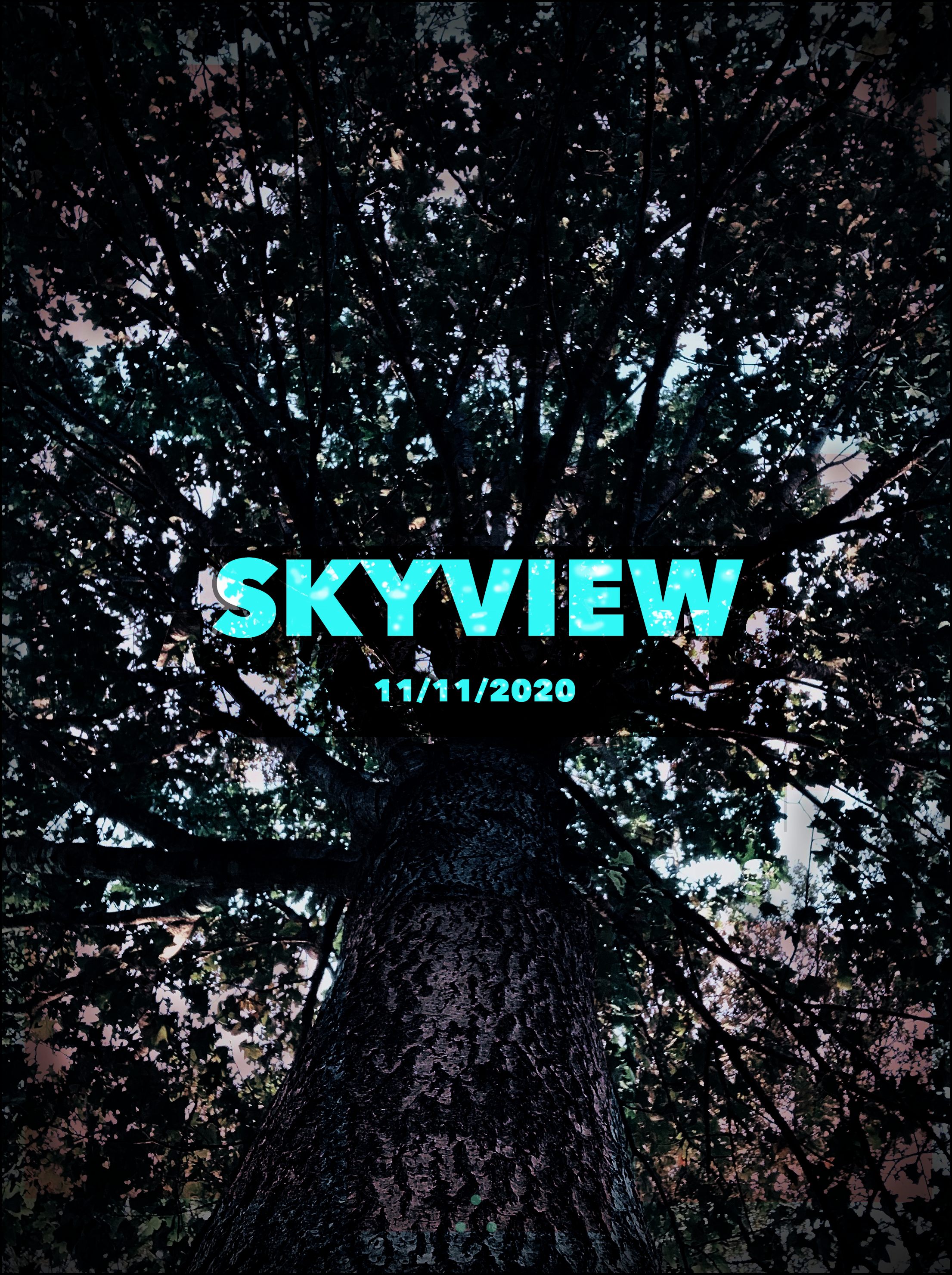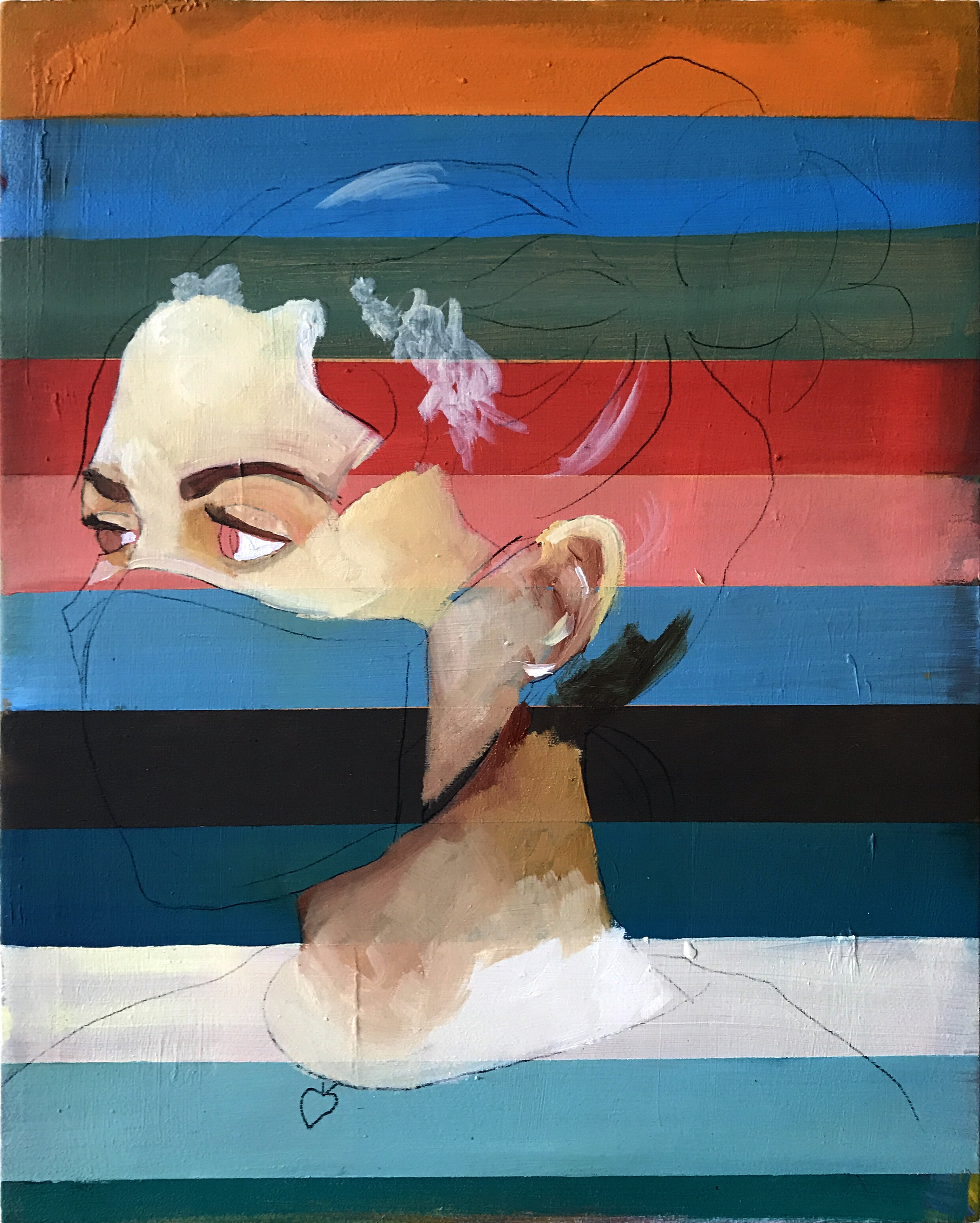Notes on streaming (or not streaming) art, and complicating where, exactly, the art is; where the lure of the idea enables our floating denial of the real.
Like democracy and marriage, the idea and promise of streaming are compromised by its layered, colliding realities. We intend to have a meeting or an art event, but instead we have dissonance and distraction. We deny the distortions and cling to the idea despite all the conditions that overwhelm it.
The superficial version of SkyView I, and possibly some of its appeal to participants and viewers, is sharing a peaceful moment in nature; a simple gesture that flies in the face of the scheduled, ordered urgency of work streaming. But the actual idea is more about how the desire for some secular spiritual escape to nature is frustrated by sharing and streaming itself. The art part is the breakdown of coherence at the intersection of intention, the pandemic, and the platforms. The aesthetic is the frustration of good intentions, and denial of ill-defined, fragile desires for something other than codec riddled work meetings. Where the frustrations and denials settle is the sweet spot of this project.
The initial concept was to upend the expectations of streaming: to present the boring, a lack of agenda, an absence of sequence. This was a pre-pandemic version of the idea, part of a cache of critical streaming ideas developed in brainstorming sessions and graduate research settings. Other versions involved variations on streaming things that barely moved and where (by conventional standards) nothing happened. One experiment involved two people sitting motionless in windowsills in different locations for half an hour. The feeds from the two locations were combined and streamed as a diptych for 30 minutes. Viewers were unsure whether it was live, a still image, or what.
So again, coming at SkyView I fresh as a viewer it is a kind of naive let’s get away from screens and get outside idea. On its face, it appears to be a minimalist idea (a lot of my work is a purposefully failing form of minimalism, and this project bears it out). That minimalist sentiment is present, but complicated and disrupted. First, it turns out that, for those who are privileged enough to remain employed and spend all day online, most do not want to spend another second on-screen - art or not. There were some compelling live projects and laudable efforts early on in the pandemic, but now we are somewhere else. We just want the screens out of our tired, overexposed faces. We’re not often sure where we want to put our faces, and so often it’s just a different screen. So streaming art is a kicking screaming situation from the outset. Second, for the participants, many of whom were students, it was not a relaxing time with the tree of their choosing. It was stressful. They were worried they were not doing it correctly, trying to stay out of the shot, wondering when they were live or not, whether it was over or not, etc.
So, for me, the art of the project was not “streaming trees” rather, it was more about the impossibility of having any kind of flow experience using streaming as we are often required to used it in our daily lives. One of the ongoing themes in my media work is that the technology overwhelms the idea and intention and it ends up not feeling like anything and might as well be a Best Buy display. Here is the disconnect between a minimalist, sincere intention and its platform and execution. It’s kind of like Facebook: hey, let’s be friends online and share things! And then fifteen years later, here we are, and WTF.
The next iteration of the project, SkyView II, will be framed differently. A single tree or view of the sky will be streamed over the course of a day so that it creates a parallel to whatever scheduled, agenda-driven, face-based streaming viewers are required to be doing. It is intended to be ambient, a peripherally reimagined version of Andy Warhol’s eight-hour-long film Empire State. The date will be chosen based on the day a particular tree decides to drop most of its leaves. I’m looking out the window now, waiting for it it to send me a notification.
In the live version, which lasted about thirty minutes, we leaned into the limitations of the platform, surrendering the visual presentation to Zoom, allowing it to set the framing, orientation, and video quality. As a multimodal new media project, there were multiple experiences, often isolated from one another: the participants, the viewers, the live experience, and the final documentation, which is purposefully at odds with the original performance.
In the end, as documentation, a version of the project is offered that pretends none of the trouble ever happened. There’s an edited video with only the best images presented, with sound recorded when the birds were just right. It is art that presents as its own selfie, fully fake, filtered, and decontextualized, feigning one thing when it is too many to see.
Appendix: Original Instructions
SkyView 1 is a participatory livestream art project by Therefore / Dean Terry and graduate students. Anyone may participate. This is the first public iteration of the project. Each participant will livestream a tree for 15 minutes on Zoom. The idea is to create a collection of trees all being live-streamed from different locations at the same time. This is public - feel free to invite your friends.
Instructions
1) Find a tree that is away from buildings and wires and other markers of civilization. Think about doing this ahead of time. It is fall, so consider finding a tree that is dropping its leaves.
2) From your phone, login to the Zoom call at 2:25 PM CST and turn on video. Turn on front-facing camera. Turn off sound.
3) Place your phone flat at the base of the tree, facing upward so that the tree takes up most of the screen and the trunk is clearly visible. See the reference image in this message / post.
4) Move away from the phone so you are not in the shot (this is important) and enjoy the moment. Please do not move the phone or look into the shot. The orientation (which way is up or down) doesn't matter.
5) The piece will start at 2:30 PM CST. After at least 15 minutes (at 2:45 PM CST) you may leave the call, or stay on a little longer if you wish. The effect of people leaving the call gradually will be like leaves falling from a tree. The call will automatically end at 3 PM CST.
What: SkyView 1 participatory art project by Therefore / Dean Terry and graduate students
When: Wednesday November 11, 2:30 PM CST.
Where: Zoom
This is the first in a series of experimental livestreams from Therefore Research




